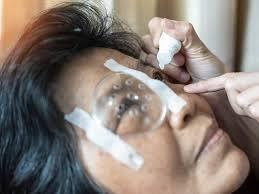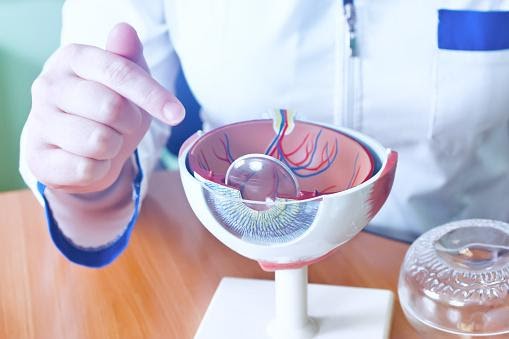
When diabetics’ blood glucose levels are effectively managed, cataract surgery is performed. The procedure is delayed if blood glucose is not effectively managed.
Diabetic patients with poor glycemic control cannot have cataract surgery due to postoperative complications such as delayed wound healing and increased infections.
Traditionally, hospitalization is advised to improve blood glucose management. However, small-incision phacoemulsification cataract surgery brisbane, which many diabetes patients have, has made same-day surgery routine. Small-incision surgery causes less inflammation than conventional extracapsular cataract extraction7, and postoperative retinopathy or maculopathy progression is rare.
However, there are no clear criteria on the range of HbA1c values above which cataract surgery is safe and postoperative complications or advancement of retinopathy and maculopathy may be avoided.
This article discusses preoperative and postoperative blood glucose control for diabetic patients undergoing small-incision phacoemulsification cataract surgery.
Surgical issues: hypoglycemic patients
Before cataract surgery, Japan’s therapeutic policy has been to control blood glucose and keep HbA1c below 10%. Surgery is postponed until HbA1c reaches this level. So, what about same-day surgery? Hyperglycemia, delayed wound healing and infection are less likely if blood glucose is effectively managed. 3-6, as well as reduced postoperative ocular inflammation13 and retinopathy occurrence/progression.
Stress and surgery induce postoperative hyperglycemia.
One study found that minor surgery under local anesthetic had negligible effects on blood glucose and cortisol levels. During and after phacoemulsification cataract surgery, blood glucose levels will remain stable. These changes appeared to be linked to variations in oral hypoglycemic and insulin regimens owing to fasting before the cataract surgery. We don’t think preoperative fasting is required, and we’ve had no issues operating on diabetic patients without modifying their diet or meds. On the day of operation, blood glucose tends to be somewhat elevated following subconjunctival steroid injection at the conclusion of the cataract surgery. Aqueous flare severity is comparable in patients with and without subconjunctival steroids after successful cataract surgery. Subconjunctival steroid injection is unnecessary.
In hyperglycemic rats, collagen creation is reduced during wound healing, while insulin normalizes collagen formation.
Our 3.5-mm incision heals quickly with little collagen production. Postoperative infection, however, is a big concern.
Postoperative infections were more common in diabetic individuals (10.7 percent vs. 1.8 percent) and there was an association between acute postoperative infection and blood glucose levels.
Postoperative endophthalmitis is the most serious eye infection. Postoperative endophthalmitis and diabetes are not well understood. Diabetics had a greater incidence of postoperative endophthalmitis, although diabetes is not an established risk factor for postoperative infection. Diabetic individuals suffer surgical endophthalmitis at a rate of around 24%. The link between blood glucose management and surgical endophthalmitis is unknown.
Surgical ocular complications
Inflammation following cataract surgery is a big issue. Diabetics have more severe symptoms than non-diabetics. 18 In diabetics with moderate retinopathy, inflammation following small-incision phacoemulsification cataract surgery is similar in diabetics and non-diabetics.
Postoperative retinopathy and maculopathy are common problems, but no studies have examined the impact of preoperative blood glucose management. Although maculopathy development has a significant impact on postoperative visual outcomes, this issue has received little attention and no definitive answers.
We’ve seen people with inadequate glucose control who had surgery and had a poor postoperative visual prognosis.
We studied these patients and found the following.

Our research participants were separated into three groups: those who improved their glycemic control quickly before surgery and kept it up thereafter (group 1), those who had poor control before and after surgery (group 2), and those who had good control before and after the cataract surgery (group 3). (group 3).
We conducted small-incision phacoemulsification cataract surgery in one eye and then followed the retinopathy and maculopathy development in the non-operated eye for a year. There were no complications from the small-incision phacoemulsification cataract surgery with acrylic IOLs. The ETDRS scale was used to assess changes in retinopathy and maculopathy from ophthalmoscopy and fluorescence fundus angiography findings.
The postoperative development of retinopathy was not different between the groups (P=.27). The group that had rapid glycemic control before the cataract surgery had significantly more postoperative maculopathy progression than the other two groups (P=.02). Read about Expect these things after cataract surgery by visiting http://acupower.info/2021/12/26/expect-these-things-after-a-cataract-surgery/
The progression of retinopathy and maculopathy in group 1 patients with moderate-to-severe nonproliferative diabetic retinopathy before surgery (P=.002 and P=.008). After rapid glucose correction, patients with poor glycemic control had no difference in retinopathy progression compared to the other groups at 1 year postoperative, but maculopathy progression was more common.
These findings show that lowering blood glucose levels quickly before surgery does not help prevent postoperative complications and may actually worsen retinopathy and maculopathy in patients with mild-to-moderate nonproliferative diabetic retinopathy.
Aspects of rapid correction
Why does rapid glucose correction cause issues? Long-term blood glucose control is required to prevent diabetic retinopathy progression. The retinopathy worsened in some patients after rapid and strict blood glucose control. Japan has similar issues. This is known as early worsening and occurs frequently after starting insulin therapy. It causes temporary vision loss and may progress to irreversible proliferative retinopathy.
This is a serious issue if strict blood glucose control, which most doctors and ophthalmologists believe is good, causes retinopathy progression. It is common to see retinopathy progression after rapid blood glucose correction in patients who have not been treated for a long time, or who have poor glycemic control. Factors include blood glucose reduction rate, HbA1c before treatment, retinopathy severity, and diabetes duration. The mechanism’s details are unknown.
Patients with no prior retinopathy or simple retinopathy rarely progressed after intensive insulin therapy, but patients with advanced retinopathy did.
In addition, the degree of retinopathy prior to rapid blood glucose control correction appears to be a key factor in the final prognosis after rapid correction. The reduced oxygen-release capacity of red cells from lower blood glucose levels and production of hypoxia-inducible factor-1 alpha after insulin therapy damages the blood-retinal barrier appear to be linked to the progression of retinopathy after rapid correction of blood glucose control. Recent research confirms this.
The rapid correction has several meanings. According to Kumamoto et al, a 3.0% decrease in HbA1c within 6 months should be avoided. Patients with HbA1c levels below 3.0% for 3 months commonly have retinal edema, hemorrhage, and soft exudates in the central fundus. If HbA1c drops from 0.5 to 1.0 percent in a month, the risk of retinopathy worsens. It may be challenging to maintain a monthly HbA1c drop of 0.5 percent.
Conclusion
No one knows what the best preoperative glycemic management plan for diabetic cataract surgery patients is. Preoperative glycemic control should be avoided in patients with moderate-to-severe nonproliferative diabetic retinopathy because it increases the risk of postoperative retinopathy and maculopathy progression. Also, individuals with moderate-to-severe nonproliferative diabetic retinopathy can have surgery independent of glucose management. Patients with moderate-to-severe nonproliferative diabetic retinopathy or maculopathy may need surgery to improve their vision.
